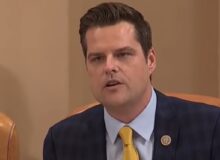Pulitzer Prize-winning columnist David Horsey, a political commentator for the Los Angeles Times maintains, “Thanks to the Internet, Americans have been pushed, unwittingly, into a vast social experiment testing whether unfettered access to the most freakish and foul pornography will warp sexual relations for generations to come. Common sense and a growing body of evidence suggest that there is a negative cost being paid that only begins with the sex trafficking and exploitation undergirding the lower depths of the porn industry.”
Sex-as-a-business (pornography, prostitution, strip clubs, phone sex, and even comic books and Play Station games) is estimated to be a $97 billion industry. U.S. sales of sex toys alone generate $15 billion. Last year, porn movies raked in $13+ billion while movies made in Hollywood grossed about $12 billion.
Gail Dines, Professor of Sociology at Boston’s Wheelock College, has observes that, “A lot of people believe the Internet drives porn, but, in fact much of the research and development for today’s technology is driven by the porn industry itself.” Case in point: Mind Geek, who owns several porn sites, is the number three bandwidth-consuming company in the world; the other two being Google and Netflix.
Pornhub, with a net worth of $2.5 billion, recorded 23 billion visits last year and reports that “teen,” “mom,” and “step-sister” were among its top ten search terms. “Step-mom” was number two. Their website features such flicks as “Who’s Your Daddy,” “Nineteen,” and “Tortured.”
 Gail Dines, who is also author of Today’s Pornography and the Crisis of Violence Against Women and Children, notes: “We cannot speak about rape, child sexual abuse, teen dating violence, domestic violence, or college sexual assault without understanding porn as a driving force behind the normalization and legitimization of violence against women and children.”
Gail Dines, who is also author of Today’s Pornography and the Crisis of Violence Against Women and Children, notes: “We cannot speak about rape, child sexual abuse, teen dating violence, domestic violence, or college sexual assault without understanding porn as a driving force behind the normalization and legitimization of violence against women and children.”
Stanford University Emeritus Professor Philip Zimbardo writes in Psychology Today: “Some people can watch porn occasionally and not suffer significant side effects; however, plenty of people, including teens and pre-teens with highly plastic brains, find they are compulsively using Internet porn, and their porn tastes are becoming out of sync with their real-life sexuality. Researchers found that the hours and years of porn use were correlated with decreased grey matter in regions of the brain associated with reward sensitivity. It may be no coincidence then that porn users report less satisfaction in their relationships and real-life intimacy and attachment problems.”
That insensitivity and alienation is reflected in the results of a survey of 8th-12th graders published in September 2017 issue of The Atlantic:
- In 2000, 80 percent of teens dated, but by 2015, that number had steadily gone down to 55 percent.
- Teens “hung out” with friends on the average of three days a week in 2000, but in 2015, the average dropped to two days a week.
- In 2000, 22 percent of teens admitted to “often feeling lonely;” that figure jumped to 34 percent in 2015.
Consider too, the North Carolina State University poll (38% of respondents were female) on the question of “How often did you view pornography:” 30 percent of students watch porn at least once, maybe a few times a month, 20 percent said several times each week, and 10 percent admitted they watch porn daily.
In 2016, the London-based Internet Watch Foundation identified over 57,000 URLs containing child sexual abuse images. Over 39,000 Verified Registered Sex Offenders have profiles on MySpace, and those are just the ones who have registered their real names. The Crimes Against Children Research Center reports that one in five teenagers say they have received an unwanted sexual solicitation via the Web.
The most popular day of the week to watch porn is Sunday, and a study of 3,000 adults and teenagers and 800 pastors and youth pastors commissioned by Josh McDowell Ministries found that: 14 percent of pastors and 21 percent of youth pastors admit they struggle with using porn; 12 percent of youth pastors concede they are addicted; 26 percent of self-identified Christian teenagers, ages 13 to 17, watch porn at least once a week.
According to the National Center on Sexual Exploitation, the Justice Department has not initiated any new enforcement actions against adult-obscenity cases since President Barack Obama took office in early 2009. In 2011, U.S. Attorney General Eric Holder ended the Obscenity Prosecution Task Force that President George W. Bush created in 2005.
Candidate Donald Trump signed a pledge to aggressively enforce “federal obscenity laws, child pornography laws, and the sex trafficking laws,” and to appoint “an Attorney General who will make the prosecution of such laws a top priority.” However, when asked about re-establishing the Obscenity Prosecution Task Force at his confirmation hearing, Attorney General Jeff Sessions said, “I didn’t know it was shut down – I’ll look into it.”
In contrast, at least 13 states, conservatives are pushing legislation to restrict and regulate the porn industry. A bill in South Carolina would make it illegal for anyone in the state to sell a computer, tablet, or smartphone without a porn filter, which companies would update via dedicated 24/7 support centers. Consumers would have to submit a written request and a payment of $20 to get the filter removed and money from these fees would go toward anti-trafficking efforts. Advocates of a paywall even includes porn film star James Deen: “I want all adult websites to be behind an age-verification wall. You can’t just say, ‘Yes, I’m 18,’ you actually have to input a credit card, or something, to create an 18-and-older environment.”
Mark Stabile of the porn industry’s lobbying front, the Free Speech Coalition, believes these filter laws will soon be moving through the legislature in up to 24 states.
Recently, Utah became the first state to allow lawsuits against pornographers for damage to minors, including seeking reimbursement for any therapy expenses. Rep. Kevin Stratton, the House sponsor of the bill, said, “This is an effort to hold those who are profiting from the harm [of pornography] accountable for the damages that are done.” Utah State Senator Todd Weiler notes that, “Seventy years ago the tobacco industry denied that its product was addictive and they denied that their products were harmful. The first 30 or so people that sued them lost, but eventually that tide turned.”
Outside of government, Starbucks and McDonalds, with a combined total of 21,000 venues offering Wi-Fi, have blocked X-rated websites. Marriott and Hilton announced that their in-room cable offerings would no longer include the pornography channels, and Google has stopped running pornography in Google Play and on their advertising platform.
Monitoring and regulating the porn industry is not a problem the government can or should address on its own. The responsibility must first be with parents, and in the private sector – from sociologists to medical professionals, and from spiritual leaders to lawmakers –- a strong campaign of caveat emptor for consumers is necessary. As George Mason warned, “No free government, or the blessing of liberty, can be preserved to any people but by a firm adherence to justice, moderation, temperance, frugality, and virtue, and by frequent recurrence to fundamental principles.”





















Join the conversation!
We have no tolerance for comments containing violence, racism, vulgarity, profanity, all caps, or discourteous behavior. Thank you for partnering with us to maintain a courteous and useful public environment where we can engage in reasonable discourse.